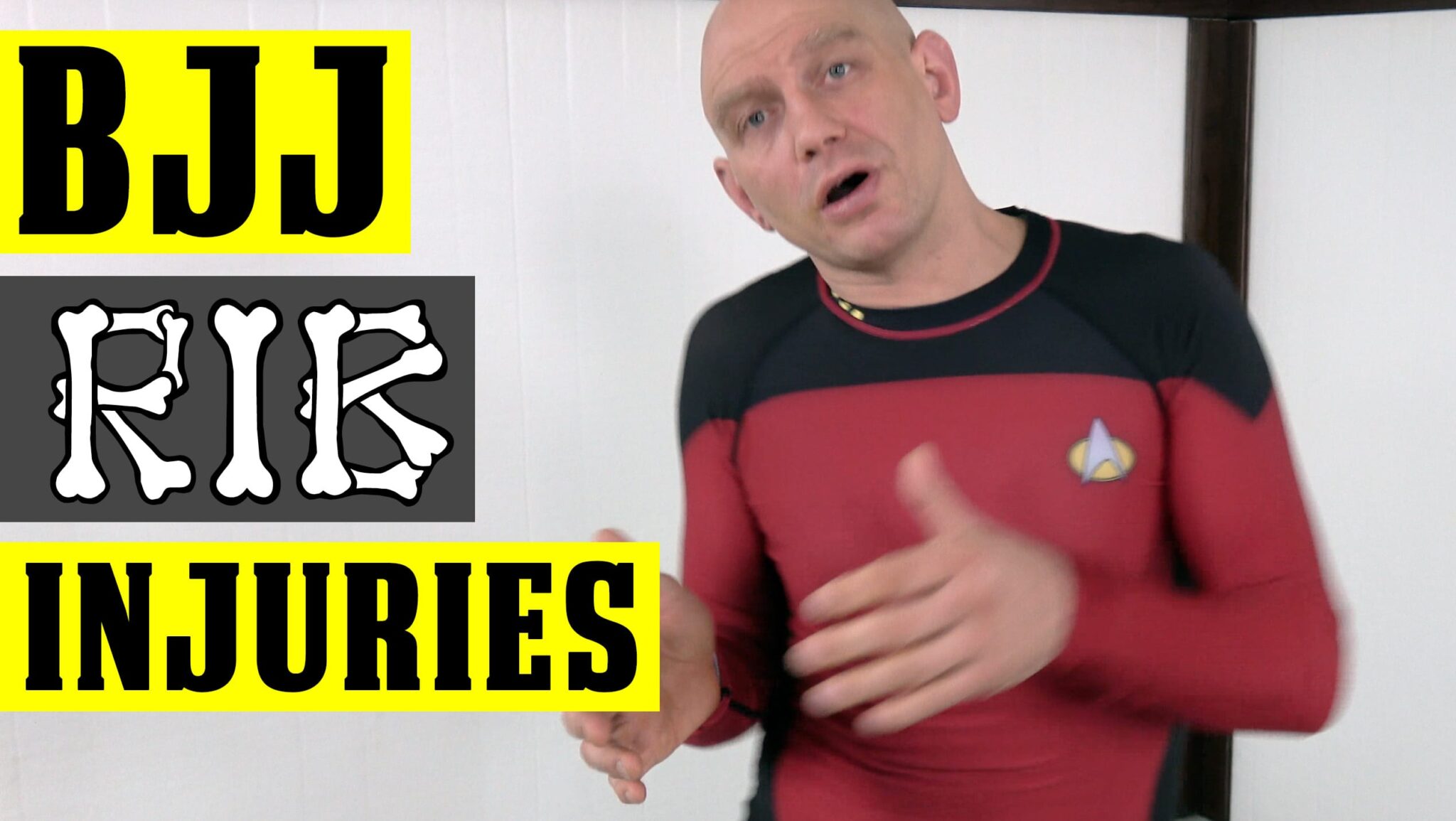
Let’s talk about rib injuries in BJJ.
This will probably only apply to a small percentage of people, but if you’re one of those people then you might be about to get some important information.
I’m being pretty general here and not differentiating between all the different ways you can bang up your ribcage: I’m including bruised ribs, broken ribs, damage to the sternum and damage at the intersection of the bone and the cartilage all in the same bucket…
In a BJJ context I’ve seen injuries to the ribs coming from throws, takedowns, guard passes and even leglocks gone bad (a hard heel to the ribs, that one).
Damage to the ribs generally shows itself as:
- Pain and bruising right at the site of injury and/or
- Pain when you take a deep breath, cough, sneeze, laugh or lift something heavy and/or
- Creaky sounds at the injury site when it gets moved or touched and/or
- Obvious deformity at the site of injury (typically a pointy bit poking out that wasn’t there before) and/or
- Difficulty breathing.
The goal of this article is NOT to help you diagnose a rib injury – that’s what your health professionals are for.
If you even think you’ve broken a rib go get an X ray and discuss what to do with your doctor.
What I’m talking about is the recovery stage. The getting back to training part…
You can either watch the video I filmed about BJJ rib injuries, or read on for a partial text summary below.
The first bit of bad news is that rib injuries take a long time to heal.
You typically won’t need surgery, but in my experience it often takes about 4 to 6 weeks of rest for things to improve.
Note that I said ‘improve’ and not ‘heal completely’. This is an important distinction and brings me to my second bit of bad news..
ALMOST EVERYONE RETURNS TO TRAINING TOO EARY AFTER A RIB INJURY AND REINJURES THEMSELVES.
I’ve seen this happen so many times it’s not even funny. Someone injures a rib, starts feeling a bit better after 2 or 3 weeks, wants to be a tough guy, comes in to class and immediately makes the injury much worse.
Now they’re typically gone for 2 more months, which is way longer than the rest they would have needed if they had just let the damn thing heal properly in the first place.
Part of the problem is that unlike a broken arm, you can’t wear a cast for broken ribs. Thus once the pain goes away there’s no continuous reminder of the injury ,and no external sign to others to take it easy on you.
For exercising with healing ribs doctors will typically tell you “Let pain be your guide.” The idea is that you can push yourself until you feel pain, at which point you should back off in intensity.
That might be great advice for a cyclist or a runner, but I think grapplers have to be more cautious than this.
Unfortunately jiu-jitsu isn’t an inherently smooth and steady form of exercise. It’s a chaotic, unpredictable, and potentially high impact environment.
After rehabbing your ribs for a month you might be able to run or ride a bike without pain, even lift weights, but can you really handle a full body tackle or a wild guard pass that ends in a flying kneemount to the ribs?
Probably not.
So you really, really have to take it easy when you’re on the comeback trail for a rib injury.
Baby yourself. Try to maintain your conditioning as best you can, but for a month or two your jiu-jitsu is mostly going to consist of visiting class, watching instructionals, taking notes, and cheering on your team mates.
Then, when you’re finally properly healed and get back to the mats, you can train like a madman again.


